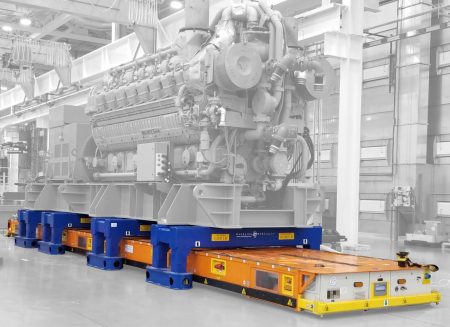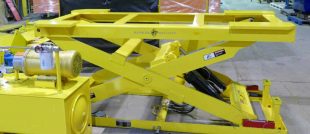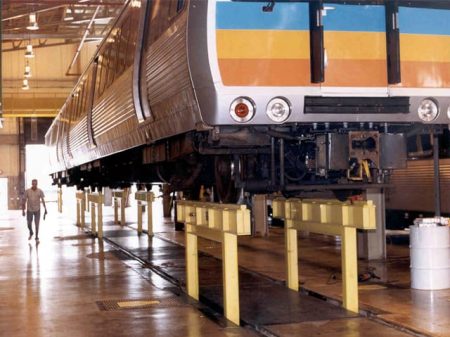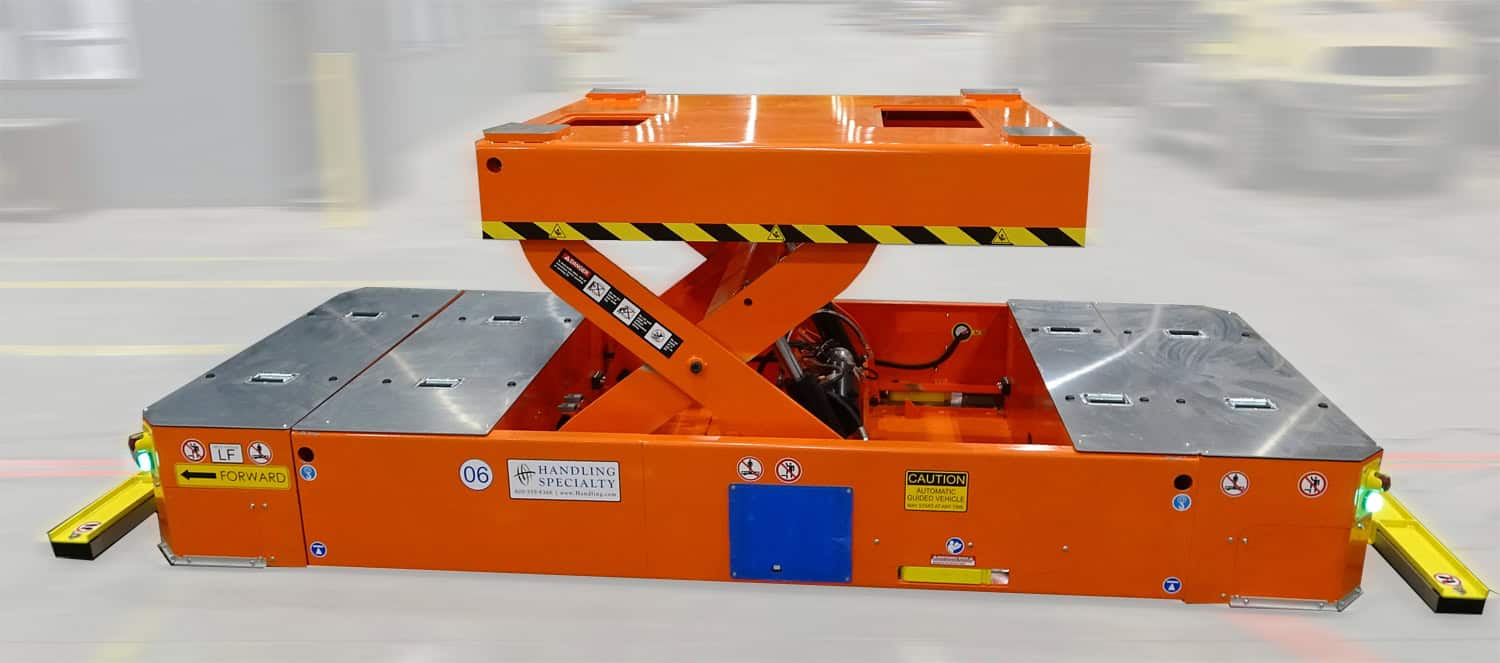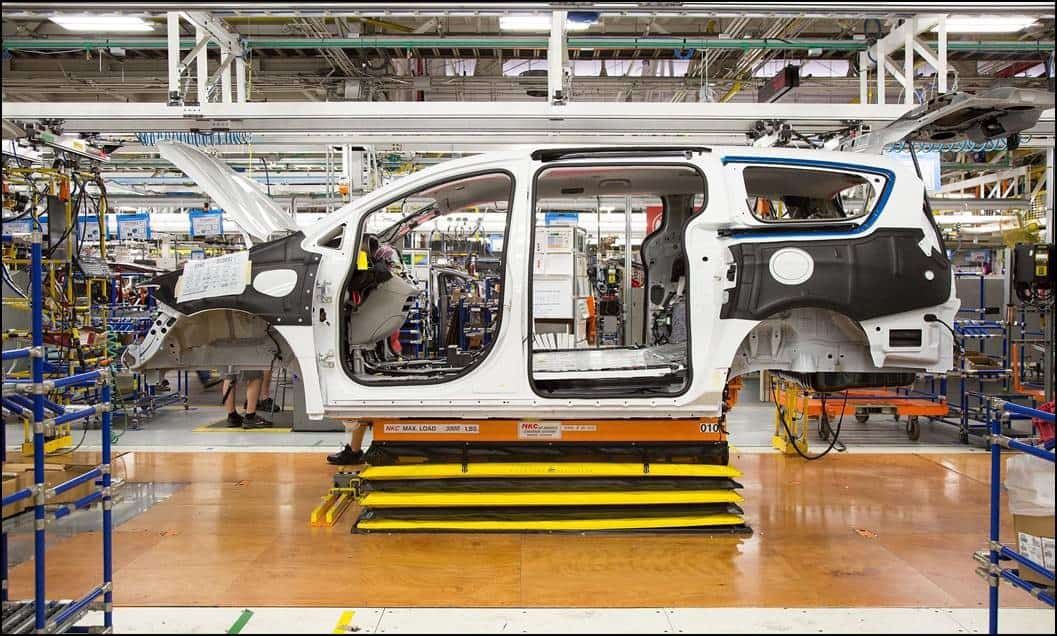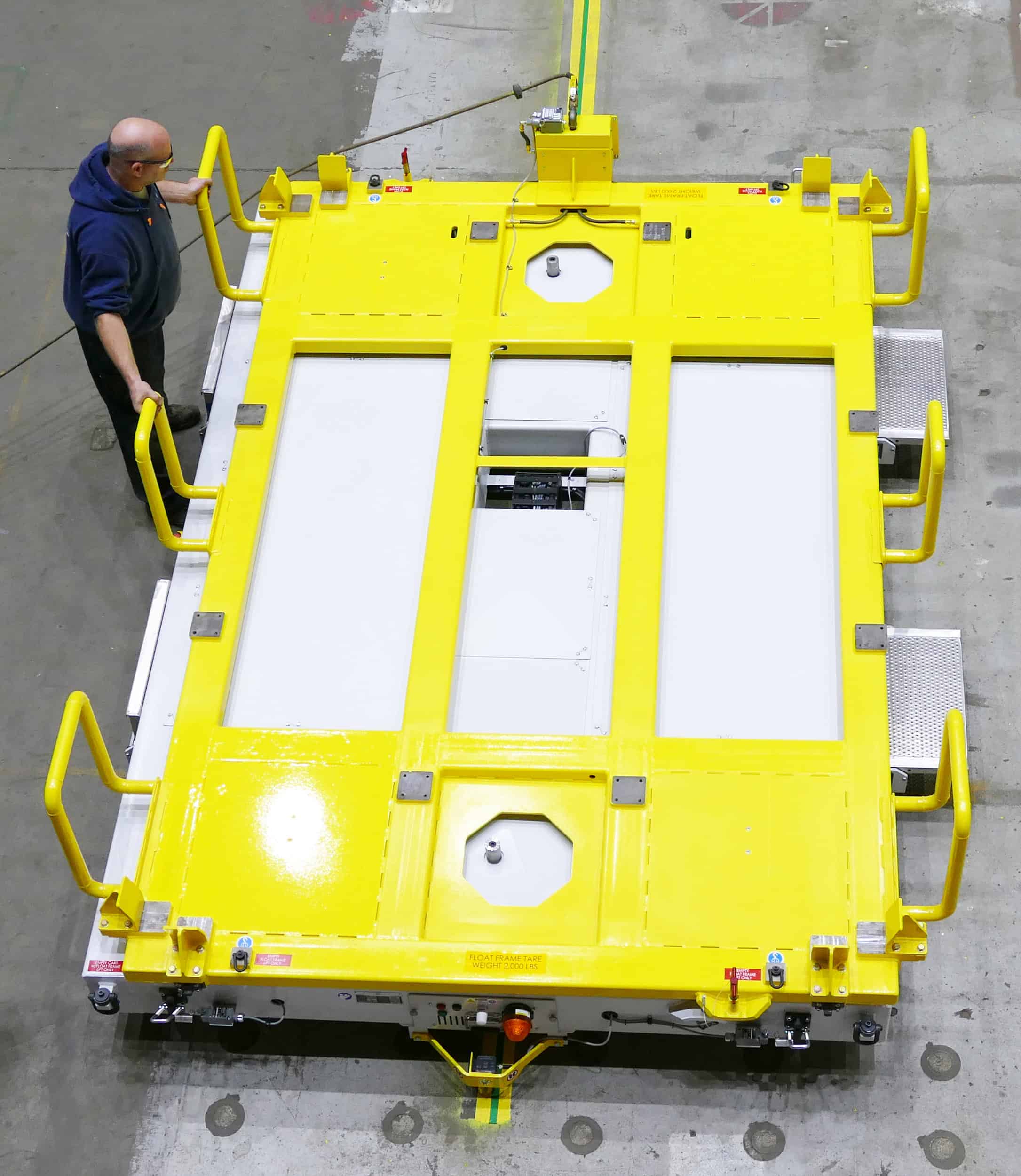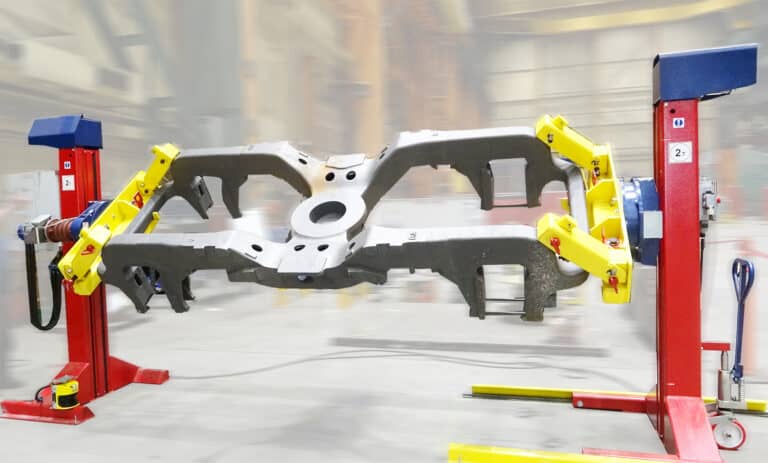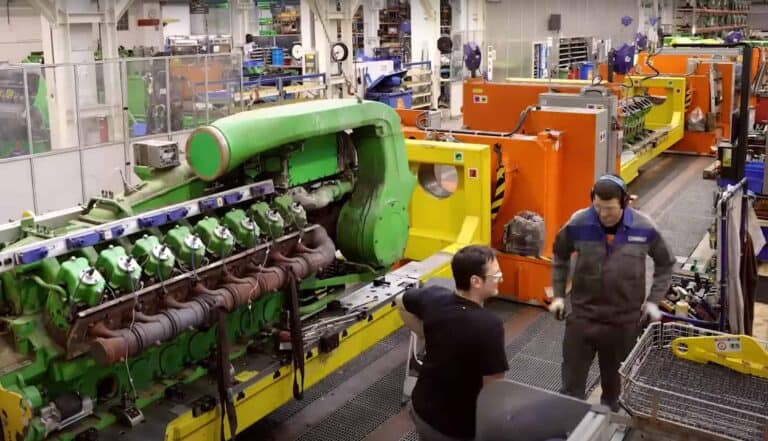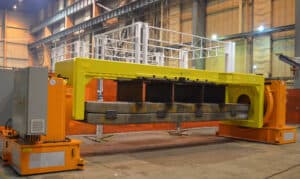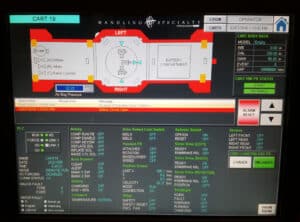In the search for more efficient processes in the world of manufacturing, businesses must consult design/build firms like Handling Specialty when designing or refurbishing their assembly, maintenance repair operation (MRO), and manufacturing facilities. Using automated guided vehicles (AGVs) and just-in-time manufacturing can make a difference. This blog will look at how AGVs and just-in-time manufacturing work well together. You will see how this strong combination changes the assembly and MRO processes, improving how things are made.
Understanding AGVs in Modern Manufacturing
Automated guided vehicles, or AGVs, are smart machines that move factory materials. Unlike people or regular forklifts, AGVs are better because they are automated, flexible, and efficient. They find their way using different technologies, including magnetic tape, lasers, and vision systems, which help them move safely and accurately, even in tight spaces or busy factory floors.
More factories are using AGVs, demonstrating that companies want to be more innovative and efficient. AGVs make material handling easier by improving workflows and letting people focus on more important tasks.
The Evolution of AGVs: From Concept to Core Component
The story of AGVs started in the mid-20th century. Back then, AGVs were tools used to move materials, guided by steel wires embedded in the factory floors or ceilings. Early AGVs used magnetic tape for navigation, making them less flexible and adaptable. As technology improved, so did the AGVs’ abilities. Laser guidance, vision systems, and advanced software tremendously improved navigation and operational efficiency.
Today, AGVs are very important in assembly automation plans. They help increase efficiency, accuracy, and safety. They have changed from basic material movers to smart systems, which shows how essential AGVs are in today’s material handling. They also play a significant role in making manufacturing facility operations more streamlined.
Defining AGVs and Their Role in the Industry
At their core, AGVs are self-driving vehicles. They have advanced sensors and navigation systems. They also have safety features such as audible alarms and flashing lights to ensure the safe and accurate movement of materials. AGVs follow set paths or use mapping technology to move around in changing spaces. This ability lets them transport materials without needing people, which helps reduce errors and accidents that often happen with manual handling.
AGVs do much more than move things. They are vital parts of modern Assembly and manufacturing facilities. They work well with current setups, like assembly management systems. This helps improve material flow through assembly lines, position products in work cells, and boost overall operational efficiency in many industries.
The Mechanisms Behind AGVs
To understand how AGVs affect manufacturing, we need to look at how they work. AGVs are different from regular material handling equipment. They run on their own, with support from advanced technology. This technology helps AGVs move through tricky spaces, avoid obstacles, and accurately complete tasks.
Core Technologies Powering AGVs
Several key technologies come together to make AGVs effective and powerful. These technologies include:
- Navigation Systems: AGVs use different navigation methods, including laser guidance, magnetic tape, and vision navigation. These systems help them find their location and follow set paths in a facility.
- Sensors: A group of proximity sensors and cameras gives AGVs real-time details about what is near their set perimeter. This helps them detect and avoid obstacles, keeping safety a priority.
- Guidance System: AGVs have onboard computers and software. They use these to analyze sensor data, understand assembly management system commands, and control their movements. This guidance system is the brain of the AGV, allowing it to work independently.
- Machine Vision: Newer AGV models include machine vision. These features improve the AGVs’ ability to adapt and make decisions in busy settings, helping them automatically manage complicated tasks such as loading and unloading.
Navigating the Path: How AGVs Move with Precision
The ability of AGVs to move accurately shows how advanced their navigation systems are. Different types of AGVs use various navigation methods. Some follow paths marked by magnetic tape, while others use laser guidance systems to map their area and create a virtual path to follow. The newest AGVs use machine vision to understand their surroundings and make choices while moving.
Choosing the right navigation technology depends on the environment’s complexity, how precise you need it, and costs. For example, pallet conveyor systems work well for simple, straight movements, while laser-guided AGVs are more flexible and can adapt to changes in the layout.
AGVs and Just-in-Time Manufacturing: A Perfect Match
Just-in-Time (JIT) manufacturing is a way to manufacture goods only when they are needed. This method works well with Automated Guided Vehicles. AGVs help move materials quickly and efficiently in the production process, making operations smoother and is essential for the success of JIT. It helps to match the delivery of materials with what the production needs. This way, JIT manufacturing can be more efficient and save costs.
Principles of Just-in-Time Manufacturing
Just-in-Time (JIT) manufacturing means making sure things are ready only when needed. This helps cut down on waste and lowers inventory costs, which makes the process more efficient. Instead of having a lot of raw materials stored up, JIT manufacturing uses a carefully managed supply chain. Here, materials come to the production line exactly when they are required.
This method avoids the costs of keeping too much stock and lessens the chances of having old materials or products. To make JIT work, you need to plan well, coordinate efforts, and have a dependable system for delivering materials. Handling Specialty’s technical sales and engineering teams work with you to design and build the perfect AGV systems for your specific needs.
How AGVs Enhance Efficiency and Reduce Waste
The use of AGVs in Just-In-Time manufacturing offers many benefits. It mainly helps improve operational efficiency and cuts down waste. AGVs automate the transportation of materials. This improves the flow of goods between warehouses and production lines. The efficient movement of materials leads to shorter lead times and less downtime. It also keeps inventory levels just right, fitting well with JIT principles.
Additionally, when AGVs work with a warehouse management system (WMS), they reduce the chances of human error in handling materials. This further improves accuracy and cuts waste from lost or damaged goods.
The Benefits of Implementing AGVs in Manufacturing Processes
The use of AGVs in factories is more than just impressive new technology. It’s an intelligent way to invest, bringing many tangible benefits. AGVs help smooth processes, depend less on manual work, and boost overall efficiency. This directly improves the manufacturers’ return on investment (ROI) in AVG technology.
Here are some of the main benefits:
Increased Productivity and Reduced Operational Costs
One significant benefit of using AGVs is that they significantly increase manufacturing productivity. AGVs can automate repetitive tasks, freeing up workers to do more important and complex tasks. By automating tasks, companies can produce more while also lowering labor costs.
AGVs also help improve operational efficiency. They optimize the flow of materials, cut downtime, and reduce the need for extensive storage areas. This can lower overall operational costs and make businesses using a lean AGV system more competitive.
Enhancing Safety and Reducing Human Error
Safety is critical in manufacturing areas, and AGVs excel at it. They have many safety features, like sensors that can spot obstacles, emergency stop buttons, warning lights, and sounds. These help lower the chance of accidents and crashes, making the workplace safer for people and products.
Also, AGVs are precise and reliable, reducing human error when handling material. This accuracy can lead to fewer damaged products, less lost inventory, and fewer production delays. In the end, this all helps operations run smoothly and saves money.
Case Studies: AGVs in Action
The way AGVs change manufacturing is evident when we look at real examples. Case studies show how different assembly industries use AGVs successfully. These stories help us understand how businesses, from big car makers to power-generation companies, take advantage of AGV technology to see real benefits.
Automotive Industry Success Stories
The automotive industry is known for its busy assembly lines and the need for large production volumes. It is a leader in the use of AGV technology. Automotive manufacturers use AGVs in their manufacturing processes. This helps to make material flow easier, boost efficiency, and cut costs.
For example, Handling Specialty designed and built an AGV system for a client, updating their assembly processes for building delivery trucks. AGVs transport the truck bodies through the line to individual work cells and position the trucks for assembly. This leads to better driving processes and lowers the need for manual labor.
AGVs Transforming Power-Generation Manufacturing
In the power generation industry, massive engines and turbines must be moved and positioned quickly and safely through the assembly and MRO lines. These AGVs can travel through complicated areas and assembly lines. This is great for handling engines over 100,000 lbs. without harming or exposing them to cranes.
AGVs can take care of many tasks in the process. They move finished products to inspection stations and for freight, helping the production process run smoothly, efficiently, accurately, and quickly.
The Challenges and Considerations of Integrating AGVs
Using AGVs in manufacturing has many benefits. However, it is also important to recognize the challenges that companies face. To make AGVs work well, careful planning is necessary. You need to understand your operational needs. An intelligent approach to integration is vital to get the most out of your investment in AGV systems.
Overcoming Implementation Hurdles
One major challenge when using AGVs is ensuring they work well with the current systems and setup, such as warehouse management software and production control. Problems with compatibility, data sharing, and creating unique interfaces can make the implementation process challenging.
|
Cost Factor |
Benefit Factor |
|
Initial Investment (AGVs, Installation) |
Increased Productivity & Efficiency |
|
Integration & Customization Costs |
Reduced Labor Costs & Operational Expenses |
|
Maintenance & Operating Expenses |
Enhanced Safety & Reduced Risk of Accidents |
|
|
Improved Accuracy & Reduced Errors |
|
|
Optimized assembly Management & Reduced Waste |
Also, the upfront costs for AGV systems can be high. This includes the price of the vehicles, set up, and fitting them into the systems already in place. Companies must closely examine the cost-benefit analysis to ensure they will get a good return on their investment. Choosing and using the right AGV forklifts for their needs is very important.
Cost-Benefit Analysis of AGV System
Conducting a comprehensive cost-benefit analysis is paramount before integrating AGVs into manufacturing processes. While the initial investment can seem substantial, focusing solely on upfront costs without considering long-term gains can be misleading.
The table clearly illustrates that while the AGV system requires an upfront investment, the long-term benefits, such as return on investment, significantly outweigh the initial costs.
Future of AGVs in Manufacturing
The future of Automated Guided Vehicles (AGVs) in manufacturing looks very bright, mainly because technology is changing faster than ever. Thanks to the improvements in the Internet of Things (IoT), custom tooling, and sensor technology, AGVs will soon be more intelligent and flexible. They will be able to manage more demanding tasks with ease.
Conclusion
In conclusion, AGVs are very important in updating modern manufacturing. They work well with Just-in-Time ideas. They can improve efficiency, cut waste, and increase safety. This makes them an excellent fit for smooth production. With new technology and better navigation systems, AGVs boost productivity and save money. They also help reduce human error. As more industries start using AGV systems, we can expect exciting new trends in technology. Using AGVs in manufacturing helps solve today’s problems and creates a path for better growth and innovation in the changing industrial world.
Frequently Asked Questions
What Makes AGVs Essential for Just-in-Time Manufacturing?
Just-in-time manufacturing focuses on getting materials to the production line at the right time. This helps reduce waste and improve efficiency. Automated Guided Vehicles (AGVs) can transport materials quickly and as needed. They help create a smooth flow on the assembly floor. This means materials come when they are required. This timing is crucial for successfully using AGVs in a JIT setup.
How Do AGVs Adapt to Different Manufacturing Environments?
AGV systems are very adaptable to different manufacturing environments. They can be quickly reprogrammed and redirected when the manufacturing process or the facility’s layout changes. They can also be fitted with custom tooling to meet the client’s specific requirements. This flexibility ensures that AGVs stay useful even as production needs change or automation grows.
Can AGVs Be Integrated with Existing Manufacturing Systems?
Yes, AGVs can easily connect with current systems, including warehouse management software, ERP systems, and production control systems. This connection helps different systems share information and work together well, making operations smooth and in sync. Companies like Handling Specialty can create a turnkey design for your entire assembly or MRO operation, including AGVs in your processes.
What Are the Initial Steps to Adopting AGV Technology in a Facility?
Adopting AGV technology needs careful planning and a straightforward way to implement it. The first steps are to look at what the operation needs, find areas that can improve, and do a detailed cost-benefit analysis. Talking with automation experts like Handling Specialty is essential to create a plan that fits well for successful planning.

